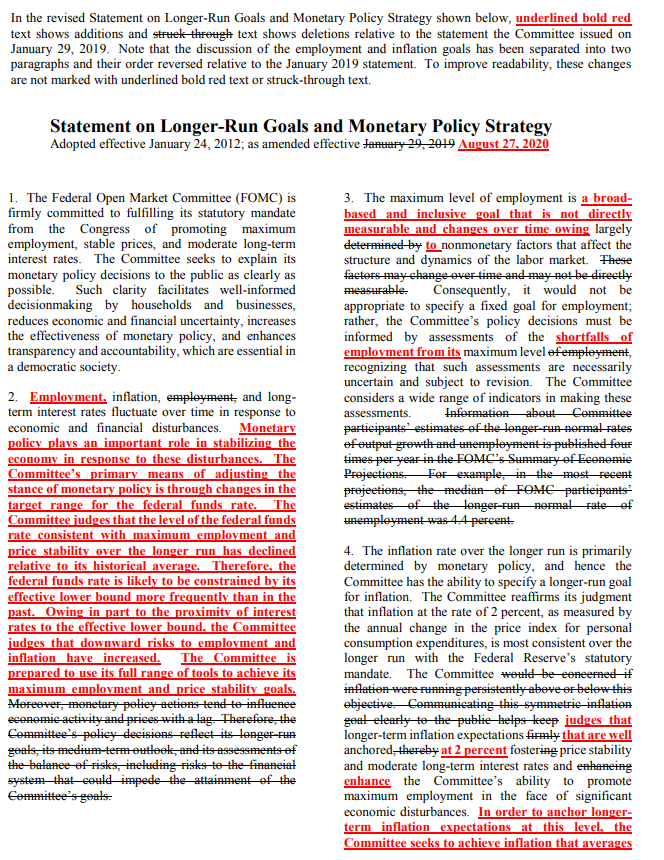
GROUNDBREAKING: Federal Reserve Takes on Average Inflation Target, Greater Focus on Jobs
Posted on 08/27/2020
The U.S. Federal Reserve served up significant changes in its approach to monetary policy. Major changes include greater weights on the U.S. labor market and less worries on “too-high” inflation.
The Federal Reserve’s new monetary policy desires to achieve inflation that averages 2% over time, offsetting periods when it is running below that level with periods when it is moderately higher. The central bank seeks to address the shortfalls from the broad-based and inclusive goal of full employment. Federal Reserve Chair Jerome H. Powell is making his mark to put the labor market as front and center, in a world of low interest rates, slow economic growth, and weak inflation. Powell is setting the stage for longer periods of low interest rates.
Announced at the Kansas City Fed’s annual policy symposium via webcast, Powell disclosed that the Federal Reserve’s new approach to inflation would not be dictated by an explicit mathematical formula. Powell has concerns over the real economy versus the financial markets.
“Our revised statement emphasizes that maximum employment is a broad-based and inclusive goal,” Fed Chair Powell said in the remarks. “This change reflects our appreciation for the benefits of a strong labor market, particularly for many in low- and moderate-income communities.”
******** START ********
Guide to changes in the Statement on Longer-Run Goals and Monetary Policy Strategy
Keywords: Federal Reserve System.


